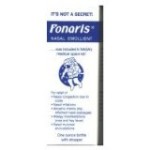The nose is there to warm, filter, and humidify the air for the lungs. Dry nose is usually caused by dry weather, allergies, decongestant medications or antihistamine medications. Discomfort and nosebleeds are the most distressing results of this malady.
Step 1
Discontinue the use of over-the-counter antihistamines and decongestants unless otherwise directed by your doctor.
Step 2
Increase your fluid intake to hydrate your body so that it can produce mucous. Drink at least six 8 ounce glasses a day of water, juice or tea.
Step 3
 Use a nasal saline spray as needed to moisturize the nasal passages. Saline nasal sprays are available for purchase over-the-counter at most drug stores. Make sure to purchase a spray that is 100 percent saline. Because the spray contains only saline (salt water) it can be used as often as needed to hydrate the nose. You cannot overdose on saline. There are also gel configurations of saline.
Use a nasal saline spray as needed to moisturize the nasal passages. Saline nasal sprays are available for purchase over-the-counter at most drug stores. Make sure to purchase a spray that is 100 percent saline. Because the spray contains only saline (salt water) it can be used as often as needed to hydrate the nose. You cannot overdose on saline. There are also gel configurations of saline.
Step 4
Place a humidifier or a vaporizer in your home and office to add moisture to the air you breathe. Regularly clean the humidifier or vaporizer to keep mold or bacteria growth inside the machine at bay.
Step 5
Apply a small amount of moisturizing cream at the opening inside your nose. Rub the moisturizer into the skin to prevent inhalation of the product. Stay away from petroleum-based moisturizers, which could cause lipoid pneumonia if accidentally inhaled into the lungs. Instead use a water-based moisturizer or 100 percent pure aloe vera gel. I prefer Bactroban water soluble ointment.
Step 6
 Consider a nasal emollient such as Ponaris. It can be purchased on Amazon.com
Consider a nasal emollient such as Ponaris. It can be purchased on Amazon.com
Tips
Talk to your doctor if you suspect one of your medications may be causing dry nasal passages. An example of medications that can cause nasal dryness are some anti-anxiety medications, diuretic blood pressure medications, pain relievers, eye drops and heart medications. Do not stop taking a prescription medication without first consulting with your doctor.